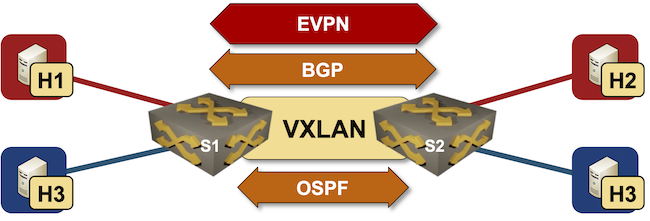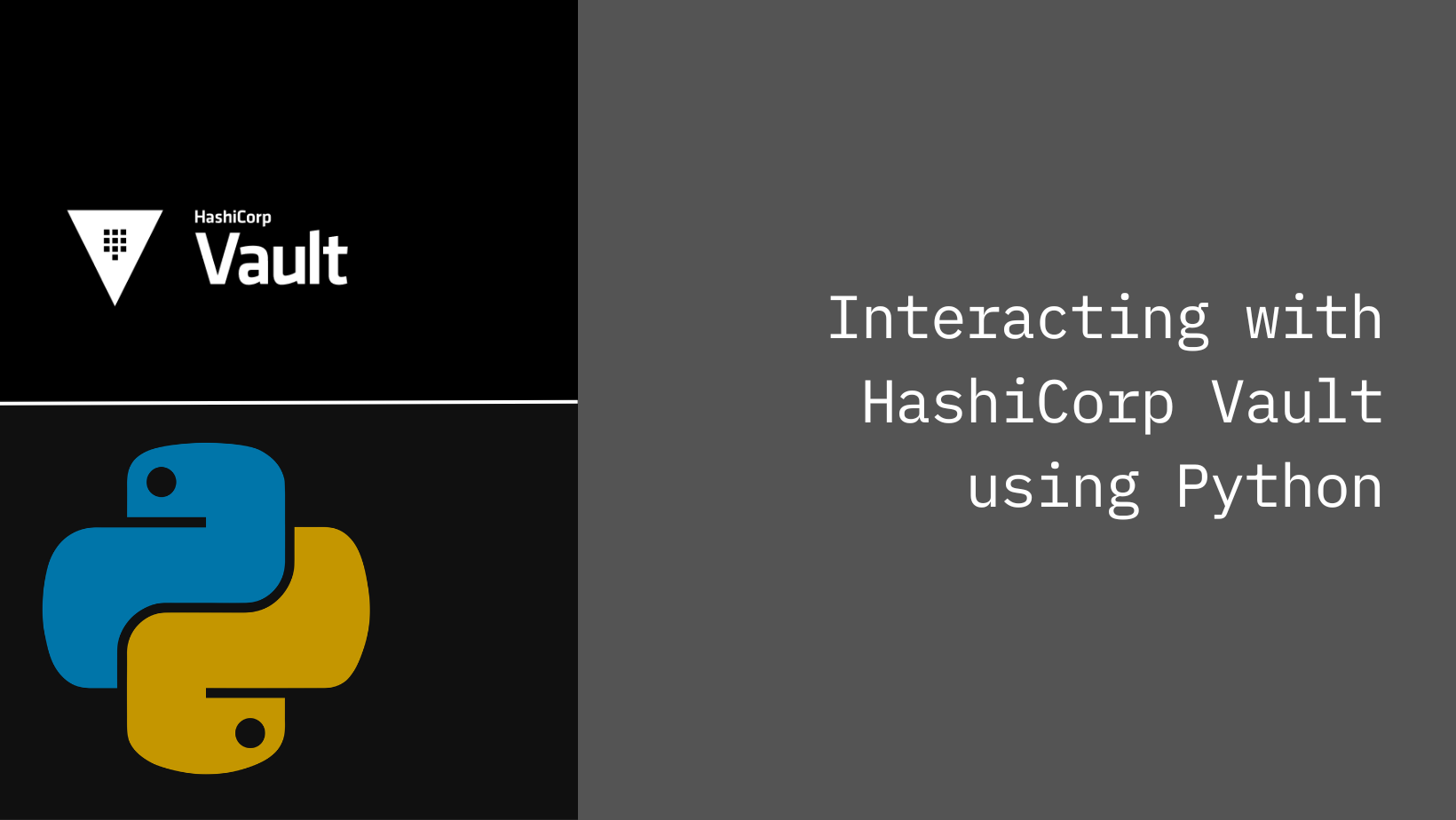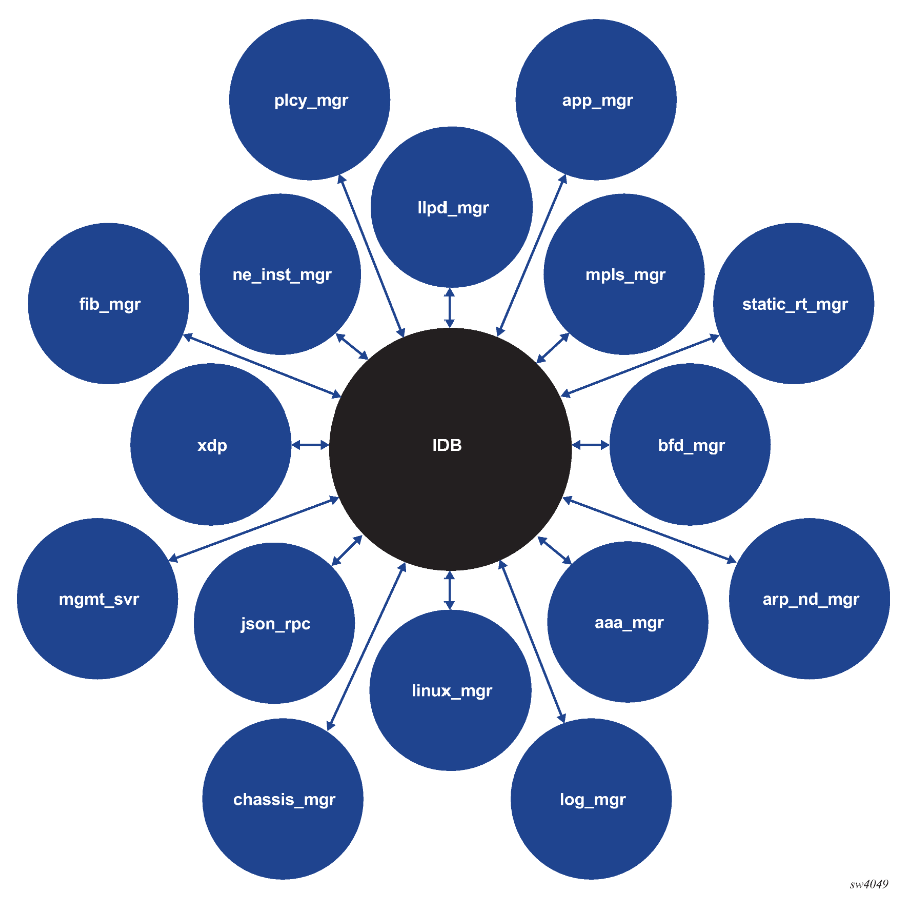netlab EVPN/VXLAN Bridging Example
netlab release 1.3 introduced support for VXLAN transport with static ingress replication and EVPN control plane. Last week we replaced a VLAN trunk with VXLAN transport, now we’ll replace static ingress replication with EVPN control plane.

Lab topology
netlab EVPN/VXLAN Bridging Example
netlab release 1.3 introduced support for VXLAN transport with static ingress replication and EVPN control plane. Last week we replaced a VLAN trunk with VXLAN transport, now we’ll replace static ingress replication with EVPN control plane.

Lab topology
Extend SRIOV VFs to Containers
Please read following git wiki
https://github.com/kashif-nawaz/Extending-SRIOV-VFs-to-Containers
Worth Reading: QUIC Is Not a TCP Replacement
Bruce Davie makes an excellent point in his QUIC Is Not a TCP Replacement article – QUIC not a next-generation TCP, it’s a reliable RPC transport protocol.
What Bruce forgot to mention is that we had a production-grade RPC transport protocol for years – SCTP (Stream Control Transmission Protocol) – but it had two shortcomings:
- It wasn’t invented by the right people;
- It used a different IP protocol number and thus upset every ossified middlebox in the Internet. QUIC hides on top of UDP (because adding extra headers makes at least as much sense as junk DNA).
Worth Reading: QUIC Is Not a TCP Replacement
Bruce Davie makes an excellent point in his QUIC Is Not a TCP Replacement article – QUIC not a next-generation TCP, it’s a reliable RPC transport protocol.
What Bruce forgot to mention is that we had a production-grade RPC transport protocol for years – SCTP (Stream Control Transmission Protocol) – but it had two shortcomings:
- It wasn’t invented by the right people;
- It used a different IP protocol number and thus upset every ossified middlebox in the Internet. QUIC hides on top of UDP (because adding extra headers makes at least as much sense as junk DNA).
Dockerize Rails 7 App
In this post, I will show you how to Dockerize your Rails 7 app in a development environment. We will be using Tailwind for the CSS and PostgreSQL for the database. This setup includes hot reloading of assets on file changes which is super nice. Software used in this post Docker -...continue reading
Worth Reading: EVPN/VXLAN with FRR on Linux Hosts
Jeroen Van Bemmel created another interesting netlab topology: EVPN/VXLAN between SR Linux fabric and FRR on Linux hosts based on his work implementing VRFs, VXLAN, and EVPN on FRR in netlab release 1.3.1.
Bonus point: he also described how to do multi-vendor interoperability testing with netlab.
If only he wouldn’t be publishing his articles on a platform that’s almost as user-data-craving as Google.
Worth Reading: EVPN/VXLAN with FRR on Linux Hosts
Jeroen Van Bemmel created another interesting netlab topology: EVPN/VXLAN between SR Linux fabric and FRR on Linux hosts based on his work implementing VRFs, VXLAN, and EVPN on FRR in netlab release 1.3.1.
Bonus point: he also described how to do multi-vendor interoperability testing with netlab.
If only he wouldn’t be publishing his articles on a platform that’s almost as user-data-craving as Google.
Decrypting TLS Traffic with PolarProxy on Client PC
The tutorial provides detailed steps for decrypting HTTPS traffic generated on a client computer with PolarProxy installed. Decrypted traffic is then processed by Wireshark running together with PolarProxy on the same PC. HTTPS is an implementation of TLS encryption on top of the HTTP protocol, which is used by all websites as well as some other web […]Continue reading...
Decrypting TLS Traffic with PolarProxy on Client PC
The tutorial provides detailed steps for decrypting HTTPS traffic generated on a client computer with […]
The post Decrypting TLS Traffic with PolarProxy on Client PC first appeared on Brezular's Blog.
Modular Network OS with Nokia SR Linux
I was lucky enough to have been invited to attend Network Field Day 29 this past September in San Jose, CA. This event brings independent thought leaders together with a number of IT product vendors to share information and opinions. We saw presentations from a pretty full range of vendors — from the chips to observability. It was a great event and worth a few hours to check out the videos. Thanks to Gestalt IT for getting me involved.
Nokia was among the list of high-end companies we saw. No, they don’t make phones any more (though they do market their name to products), but they are still in the full-power, throw-packets-as-fast-as-you-can markets for hyperscalers and such. If you’re old like I am, you might remember Nokia as the hardware that Checkpoint ran on for a while. My brain has done its best to filter memories of those devices, but, luckily, the Nokia team is doing some much better things these days.
SR Linux was one of the focuses and the big hitter for me. This is a modernization of the SR OS that was introduced 20 years or so ago, and gets us into a “world of streaming telemetry. Continue reading
Interacting with HashiCorp Vault using Python

In the realm of data security, HashiCorp Vault emerges as a formidable tool for safeguarding sensitive information. Its primary role? To serve as a secure and encrypted repository for your most prized secrets. Whether you choose to manage it independently through the open-source option or opt for the convenience of HashiCorp Cloud Platform's SaaS solution, Vault stands as a reliable guardian of your data, ensuring confidentiality and integrity are upheld with every interaction.
The Vault HTTP API serves as a versatile gateway, granting comprehensive control over Vault's functionalities through simple HTTP requests. Whether you're delving into secrets management or tackling encryption tasks, this API opens the door to Vault's full potential. And for Python enthusiasts like myself, there's an added layer of convenience: a meticulously crafted Python SDK, complete with thorough documentation, streamlining interactions with Vault.
In this blog post, we'll embark on a journey to set up a self-managed instance of Vault, exploring how to seamlessly integrate Python for streamlined interaction with the platform.
Installation
We'll kick start our Vault journey by spinning up an instance using Docker. To achieve this, we'll craft a docker-compose.yml file to orchestrate the process:
version: "3.9"
services:
hashicorp-vault:
build: .
ports:
Continue readingModular Network OS with Nokia SR Linux

I was lucky enough to have been invited to attend Network Field Day 29 this past September in San Jose, CA. This event brings independent thought leaders together with a number of IT product vendors to share information and opinions. We saw presentations from a pretty full range of vendors — from the chips to observability. It was a great event and worth a few hours to check out the videos. Thanks to Gestalt IT for getting me involved.
Nokia was among the list of high-end companies we saw. No, they don’t make phones any more (though they do market their name to products), but they are still in the full-power, throw-packets-as-fast-as-you-can markets for hyperscalers and such. If you’re old like I am, you might remember Nokia as the hardware that Checkpoint ran on for a while. My brain has done its best to filter memories of those devices, but, luckily, the Nokia team is doing some much better things these days.
SR Linux was one of the focuses and the big hitter for me. This is a modernization of the SR OS that was introduced 20 years or so ago, and gets us into a “world of streaming telemetry. Continue reading
Top 10 Trends Transforming the Cloud, According to Forrester
Hyperscalers offering composability and concerns about dependence on megavendors among the trends molding the future of the cloud.Heavy Networking 649: Cisco NSO 6.0 Boosts Performance, Improves Usability (Sponsored)
On today’s sponsored Heavy Networking we dive into new features of Cisco’s Network Services Orchestrator, or NSO. NSO is a network orchestration platform for large enterprises and service providers that offers multi-vendor automation, configuration management, service creation, ongoing monitoring and upgrades, and more.
The post Heavy Networking 649: Cisco NSO 6.0 Boosts Performance, Improves Usability (Sponsored) appeared first on Packet Pushers.
Heavy Networking 649: Cisco NSO 6.0 Boosts Performance, Improves Usability (Sponsored)
On today’s sponsored Heavy Networking we dive into new features of Cisco’s Network Services Orchestrator, or NSO. NSO is a network orchestration platform for large enterprises and service providers that offers multi-vendor automation, configuration management, service creation, ongoing monitoring and upgrades, and more.RobotFramework Debug Logs

This is a very short post, as a complement to my previous post about PyATS, Genie, and RobotFramework. How to see the debug logs of RobotFramework? I’m doing a lot of testing with RobotFramework and Genie right now. And I had a little trouble getting the right level of debugging to fix my mistakes. Here is a short and efficient way to generate a log file with RobotFramework: Just add the options -L trace and –b your_debug_file.log to have everything you need. For example: robot -d ./output -L trace…
The post RobotFramework Debug Logs appeared first on AboutNetworks.net.

 s going to be really interesting to see if Comcast, Charter, and the other big cable companies raise prices later this year. The industry has changed, and it doesnâ€
s going to be really interesting to see if Comcast, Charter, and the other big cable companies raise prices later this year. The industry has changed, and it doesnâ€